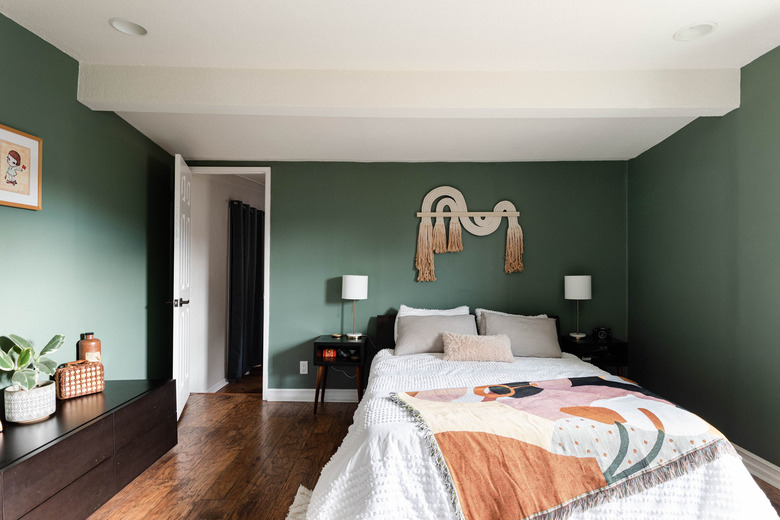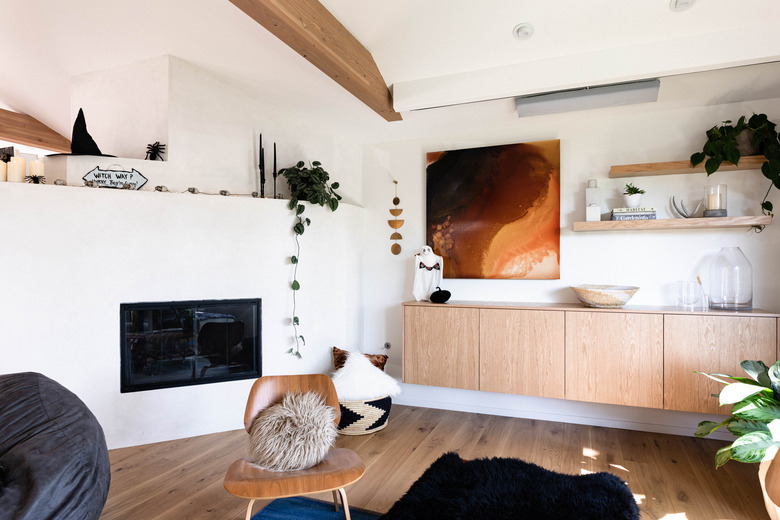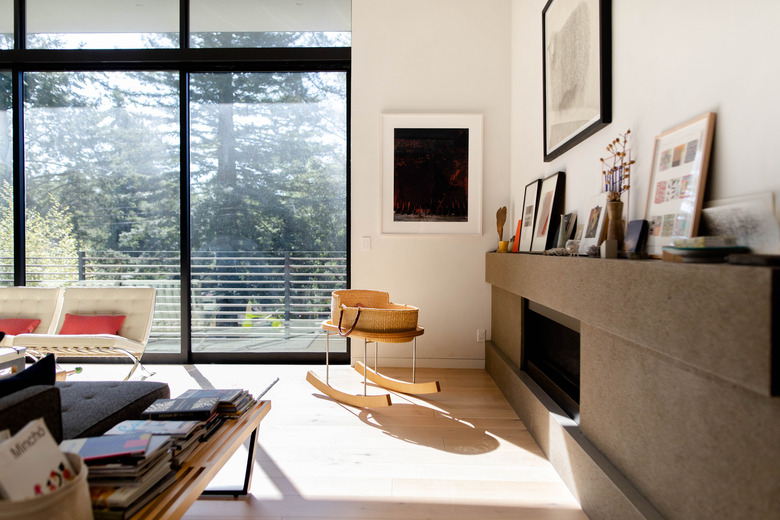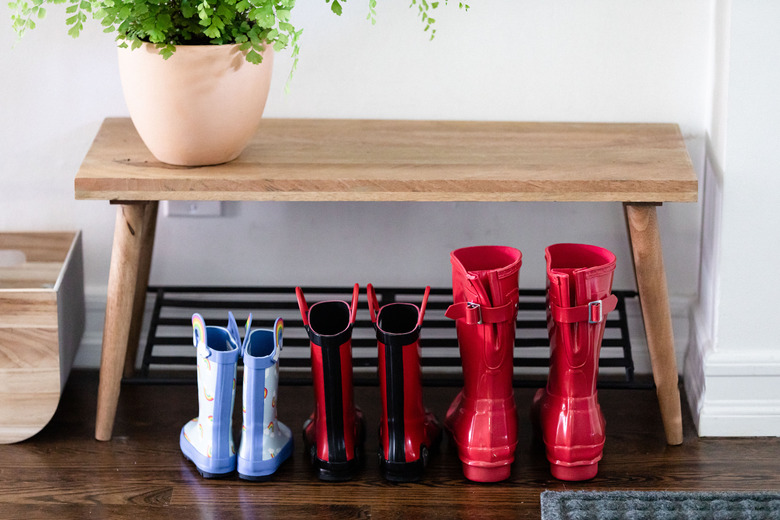Bamboo Flooring Vs. Hardwood
People often mistake bamboo flooring for hardwood, but there are distinct differences in cost, look, origins and manufacturing. However, these flooring products share similarities in that they are durable, elegant and can last years with proper care and maintenance. It can be hard to tell the difference between hardwood and bamboo, as they do have a similar look at first glance. These natural flooring options are often put in the same category among retailers and manufacturers, which can be confusing to the consumer.
Origins of Bamboo and Hardwood Flooring
Origins of Bamboo and Hardwood Flooring
According to the Wood Database, while most bamboo grows in warmer climates all over the world, flooring timber comes from plants in southern China. There are over a hundred different bamboo species, but flooring timber usually comes from the Phyllostachys edulis and Bambusa plants.
Hardwood flooring comes from a wide variety of tree species that can be domestic or exotic. In the United States, there are over 20 types of trees that are harvested for flooring, such as oak, walnut and ash, with over half of those farmed in the eastern states. Exotic woods, including mahogany, jarrah and teak, are produced in places such as South America, Brazil and Indonesia.
Hardwood flooring comes as solid wood or engineered planks, in which the top layer is real wood and the core layers are plywood. Bamboo also comes in engineered planks, but unlike hardwood, layers of bamboo strips bond with adhesive, heat and pressure to create solid planks.
Cost of Hardwood vs. Bamboo
Cost of Hardwood vs. Bamboo
When choosing wood, consumers want flooring material that's strong and easy to maintain that will last a lifetime, all while fitting their specific physical space and budget. There is some overlap in the price of hardwood and bamboo materials and installation.
Solid hardwood flooring is generally more expensive than bamboo, but this depends on the type of wood, from where it comes, the overall quality of the material and its finish. Softwoods like pine are often as little as $3 to $6 per square foot, while more exotic woods like mahogany or cypress can be as much as $8 to $14 or more. Installation costs can run the gamut and generally depend on flooring area and type of flooring (click-together versus nail-down). For the budget-conscious consumer, bamboo is a bit cheaper overall, at $5 to $7 per square foot for materials and $4 to $7 for installation.
Environmental Impact of Hardwood and Bamboo
Environmental Impact of Hardwood and Bamboo
Bamboo is a self-regulating grass — it can grow without having to be replanted after harvest. It matures within three to five years and can take from four to 15 years to reach its maximum size of over 100 feet high. Manufacturers harvest bamboo by hand, but with the species used in flooring grown mainly in southeast Asia, its carbon footprint can appear to be more significant since it is not locally sourced. Trees can take anywhere from 40 to 60 years to mature, and once harvested, replanting must take place. Unlike bamboo, hardwoods like oak, birch and ash often come from local forests.
The U.S. regulates the quality of hardwood through organizations like the National Wood Flooring Association, but China does not monitor the manufacturing of its bamboo products. Any bamboo you purchase should come with a Forest Stewardship Council certificate. The FSC is an international organization that promotes responsibility toward the world's forests and ensures the quality of the products that come from them.
Durability of Hardwood vs. Bamboo
Durability of Hardwood vs. Bamboo
The Janka hardness scale estimates how various hardwood species withstand dents and wear and also indicates the difficulty in cutting or nailing different wood species. For flooring, bamboo comes in solid planks with horizontally or vertically stacked pieces or as strand-woven planks with cross-stacked pieces. Horizontal and vertical bamboo planks have a hardness rating of 1,340 on the Janka scale, but strand-woven bamboo is one of the most durable materials on the market, with a rating of 3,800 or more. By comparison, red oak, one of the most popular hardwood flooring choices in the U.S., is 1,290 on the scale.
While both wood and bamboo are indeed durable, hardwood is prone to dents and scratches, but how much depends on the species. Ebony and Brazilian cherry will sustain less damage than pine or chestnut because of where they rank in hardness. Bamboo is less prone to this type of damage, but darker-colored planks are weaker than those of a natural color. This is due to carbonization, the boiling process that gives bamboo an amber hue. If you're looking for more durable flooring, stick with bamboo that is lighter in color.
Maintaining Hardwood and Bamboo Flooring
Maintaining Hardwood and Bamboo Flooring
Hardwood is easy to care for and has a lifespan of 50 years or more. Sweep hardwood using a microfiber mop or broom, but take caution when using a vacuum cleaner, as it may scratch the wood. For deeper cleaning, make sure to use a hardwood floor cleaner recommended by the manufacturer. You can also use polish or wax on hardwood if your floor is unfinished or treated with sealer, lacquer, varnish, shellac or oil. Do not use wax or polish on floors that have been prefinished with urethane, as it can dull the floor.
Bamboo is also easy to clean but lasts only about 20 to 30 years. You can sweep bamboo flooring daily using a microfiber mop or broom or a vacuum. For deeper cleaning, make sure to use a product created only for bamboo floors and don't use wax or wax-based cleaners.
Hardwood and bamboo are not water-resistant. Spilled liquid warps and stains hardwood, and if you don't clean it in time, you may need to refinish or replace the flooring depending on the extent of the damage. Mold and mildew can also settle into hardwood, which can cause it to rot. Bamboo flooring fares a little better, as it repels mold and mildew. However, it is still a natural material, which means it can warp or cup. To avoid any water damage on hardwood or bamboo, wipe up spills as soon as you see them.
Appearance Differences in Hardwood and Bamboo
Appearance Differences in Hardwood and Bamboo
Hardwood is currently the most popular flooring choice among homebuyers, and there is a wide range from which to choose to compliment any decor ideas you may have. Wood species come in several different colors, shades, grains and grades, from those that are more common, like walnut and ash, to those that are more exotic, like tigerwood, ebony or Brazilian cherry. Wood's beauty only increases with age, and no two planks are alike.
While bamboo can mimic the look of hardwood, it has more limitations in terms of appearance. Natural bamboo is mostly light but also comes in colors like gray, cherry or white through staining, and manufacturers can achieve a darker hue in bamboo through carbonization. Traditional bamboo planks show the knuckles or joints of the grass, while strand-woven bamboo looks more like hardwood, as it has a random grain pattern. Both hardwood and bamboo will darken over time.
References
- The Wood Database: Bamboo
- Ambient Bamboo Floors: Janka Hardness Scale for Bamboo & Eucalyptus Flooring
- Floor Critics: Hardwood vs Bamboo Flooring
- American Hardwoods: Hardwoods -vs- Bamboo
- The Bamboo Flooring Company: What Are the Different Types of Bamboo Flooring?
- Diffen: Bamboo vs. Hardwood Flooring
- Forest Stewardship Council: What We Do
- National Wood Flooring Association: Manufacturing



